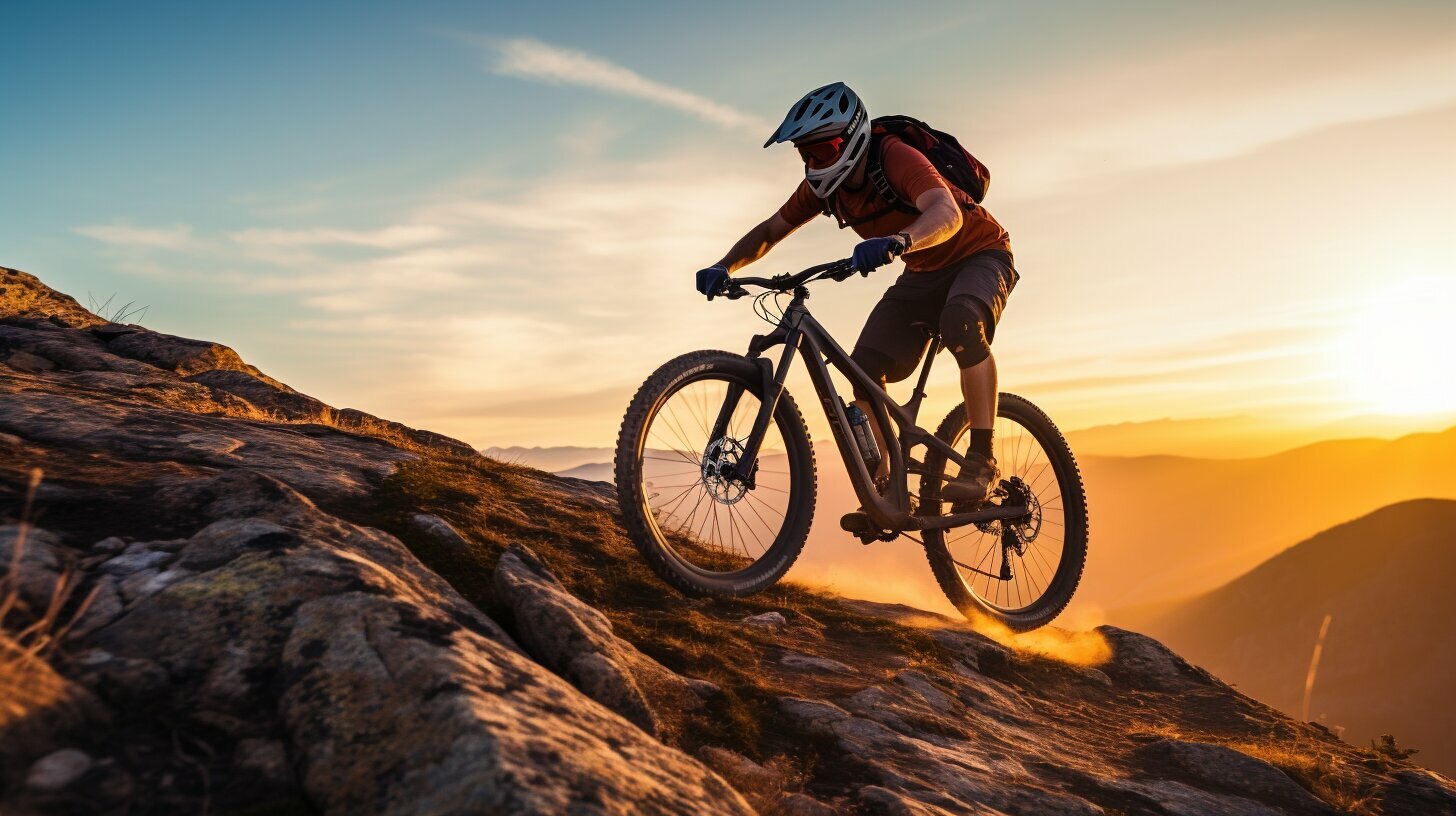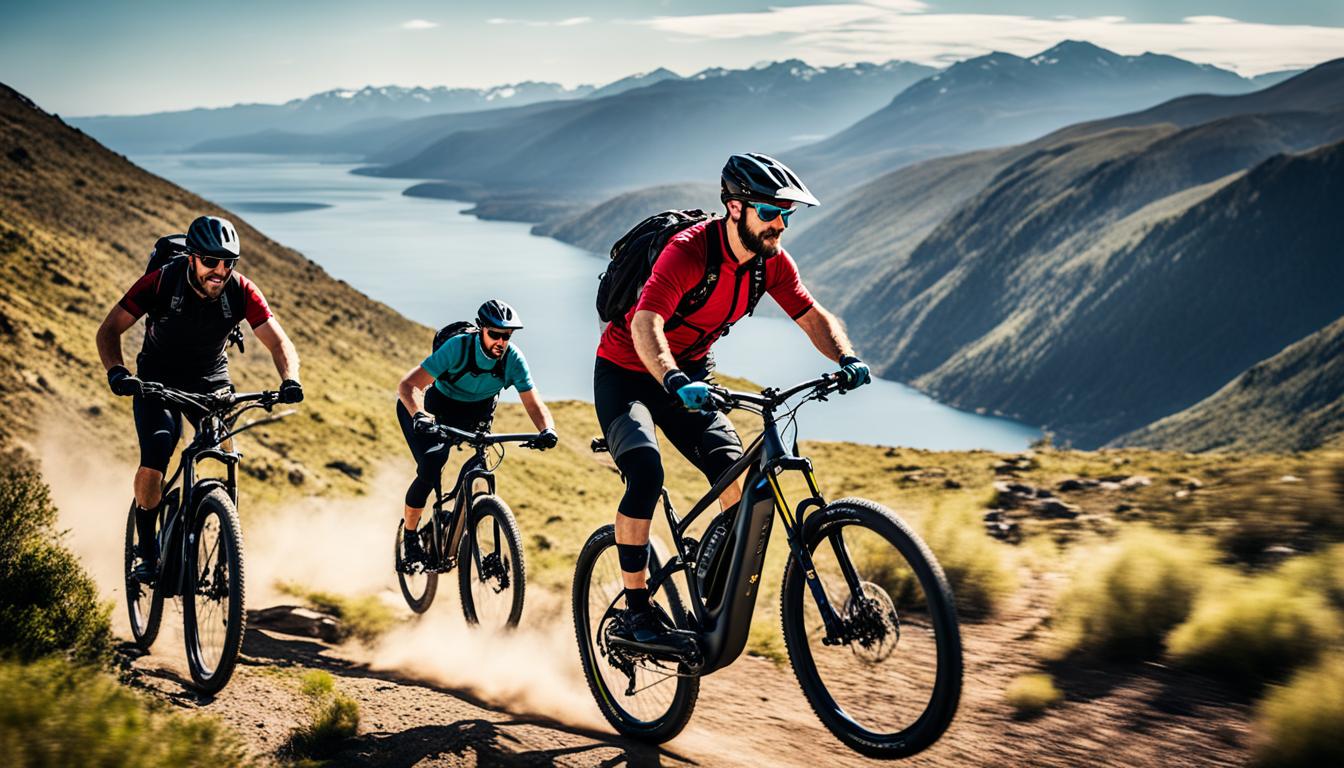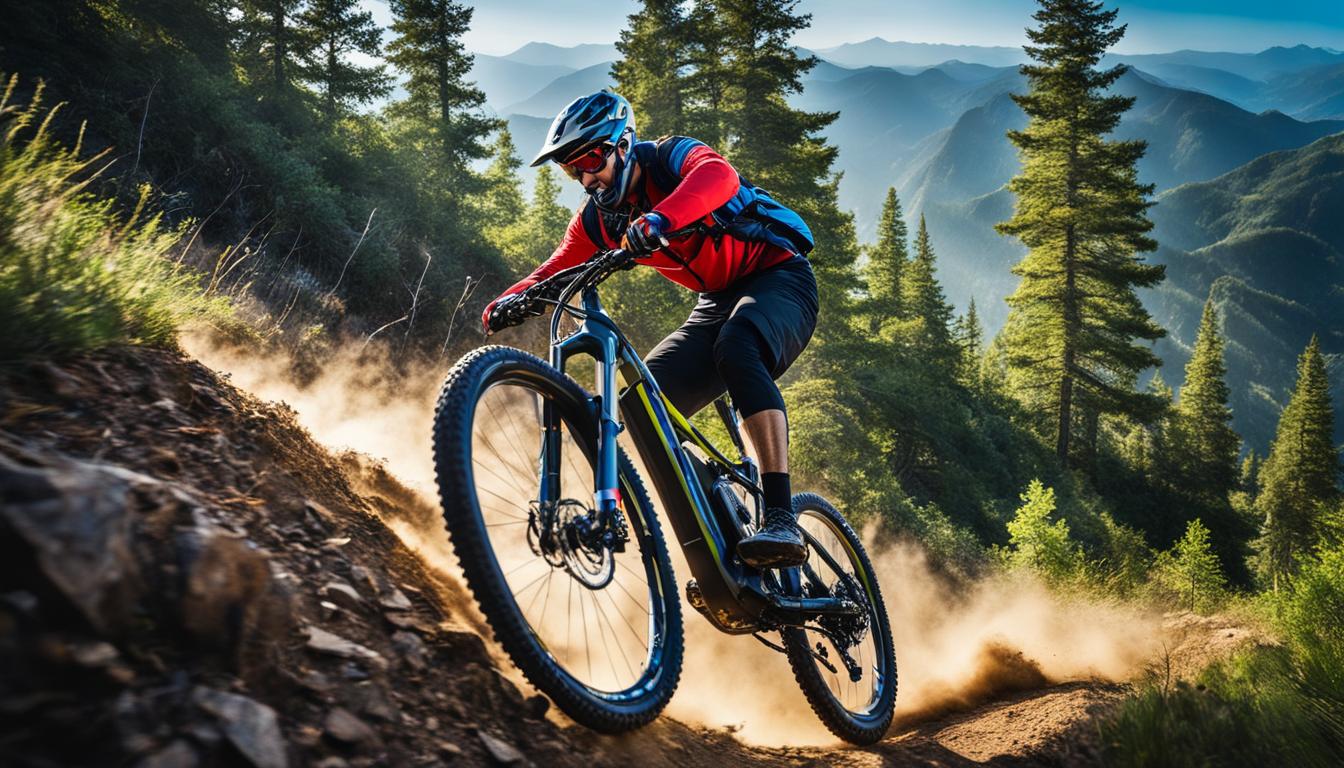If you’re looking for an exhilarating way to explore nature, mountain biking is a great activity to try. But if you’re new to mountain biking, getting started can feel overwhelming. That’s why we’ve created this comprehensive guide to help you on your journey to becoming a proficient mountain biker. We’ll cover essential techniques, gear recommendations, and safety tips so you can ride with confidence on the trails.
Key Takeaways
Disclosure: When you buy through links on our site, we may earn an affiliate commission.
- Mountain biking is a thrilling way to explore nature.
- This guide will cover everything you need to know to get started with mountain biking.
- Essential techniques, gear recommendations, and safety tips will be covered.
- Remember to prioritize safety, practice your techniques, and have fun exploring the world of mountain biking.
Understanding the Basics of Mountain Biking
Before you hit the trails, it’s important to understand the basic techniques and skills needed for mountain biking. As a beginner, it’s recommended that you start with easy trails and gradually progress to more challenging routes.
Here are some essential mountain biking techniques for beginners:
- Body Position: Maintaining a balanced and centered position on the bike is crucial for stability. Keep your weight over the pedals, and your elbows and knees bent to absorb shocks.
- Braking: Use your brakes smoothly and gradually. For example, on a downhill, apply your brakes intermittently to control your speed, instead of jamming them on all at once.
- Shifting Gears: Change gears before a hill or descent, to avoid shifting under load. Shift your gears smoothly and gradually, using the right gear for the terrain and slope.
- Obstacle Handling: Learn to negotiate obstacles such as rocks, roots, and ruts by shifting your weight and lifting your front wheel. Practice on easy obstacles before attempting more challenging ones.
Now that you know the basic techniques, it’s time to find beginner-friendly trails. Look for trails with smooth terrain and gentle slopes, and avoid routes with steep inclines or technical features. Here are some beginner-friendly mountain bike trails to get you started:
| Trail Name | Location | Difficulty |
|---|---|---|
| Bald Mountain Trail | Asheville, North Carolina | Easy |
| Lake Hodges Trail | Escondido, California | Easy |
| Goat Peak Trail | Winthrop, Washington | Intermediate |
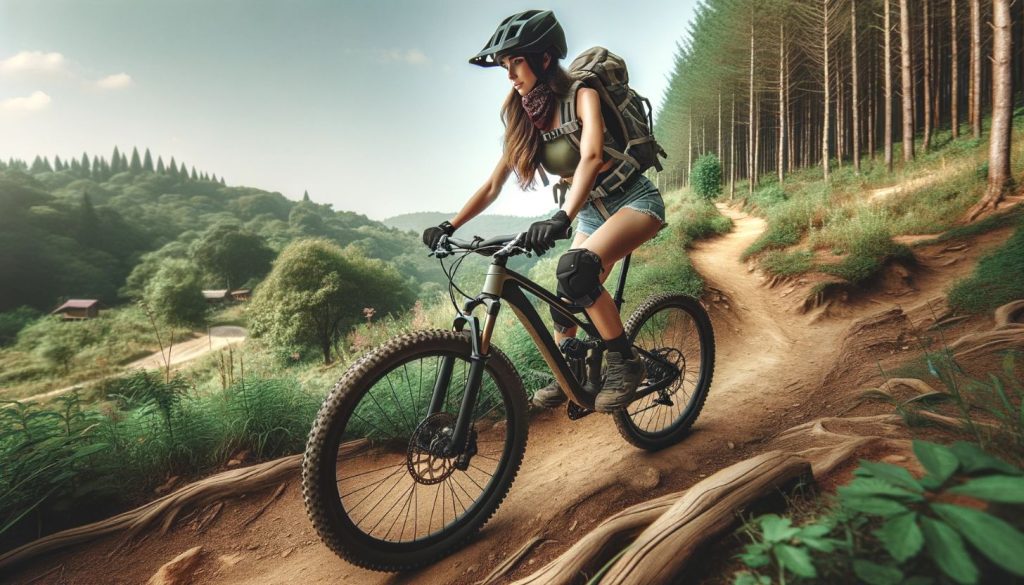
Remember, the key to success in mountain biking is to start small and progress gradually. With these techniques and beginner-friendly trails, you’ll be well on your way to becoming a proficient mountain biker.
Choosing the Right Mountain Bike for Beginners
Choosing the right mountain bike is essential for a comfortable and enjoyable riding experience. Here are some factors to consider when selecting a beginner-friendly bike:
| Factor | Description |
|---|---|
| Bike Type | Decide on the type of mountain bike you want, such as cross-country, trail, all-mountain, or downhill. Consider the type of trails you’ll be riding and your riding style. |
| Frame Material | Mountain bike frames are made from different materials, including aluminum, carbon fiber, steel, and titanium. Each material has different strengths and weaknesses, so choose one that suits your preferences and budget. |
| Suspension Type | Mountain bikes come with either full suspension or front suspension only. Full suspension offers more comfort and control on rough terrain, but it’s more expensive. Front suspension is a budget-friendly option that’s suitable for beginners. |
| Wheel Size | The size of the wheels affects the ride quality and handling of the bike. The most common wheel sizes for mountain bikes are 26-inch, 27.5-inch, and 29-inch. Choose a size that complements your riding style and trail type. |
| Fit | Make sure the bike fits you well for maximum comfort and efficiency. Consider the frame size, standover height, and reach. |
When shopping for a beginner mountain bike, consider visiting a local bike shop to get expert advice and try out different models. It’s important to invest in a bike that suits your needs and skill level, as it can greatly impact your mountain biking experience.
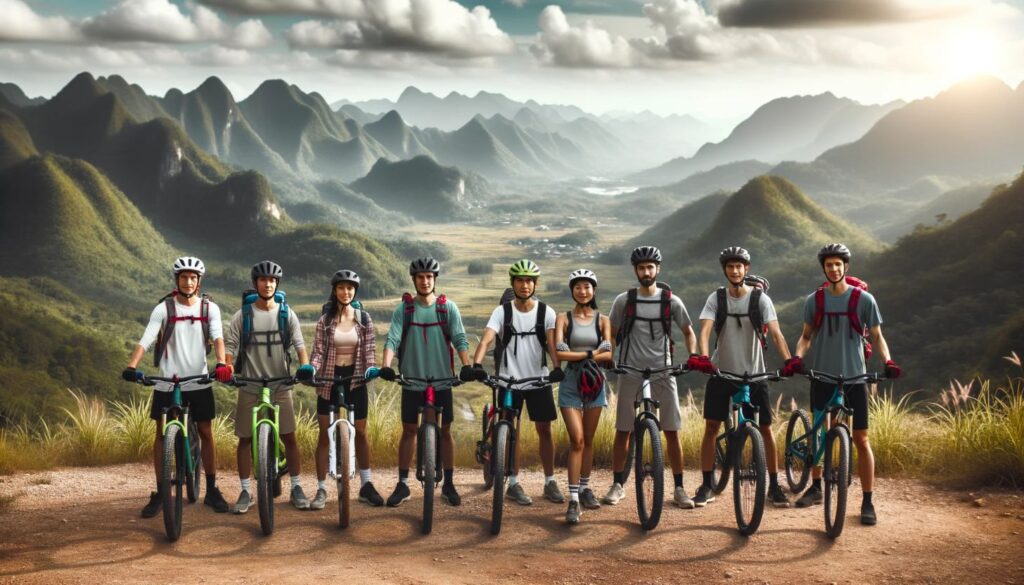
Essential Equipment for Beginner Mountain Bikers
As a beginner mountain biker, it’s important to have the right gear to ensure a comfortable and safe riding experience. Here is a list of essential gear you should consider:
| Helmet | A properly fitting helmet is the most crucial piece of gear for mountain biking. Look for a helmet that is certified and has good ventilation. |
|---|---|
| Protective Eyewear | To protect your eyes from debris and branches, consider getting a pair of wraparound sunglasses or clear lenses glasses. |
| Gloves | Invest in a pair of padded gloves to protect your hands and to get a better grip on your handlebars. |
| Apparel | Wear breathable and moisture-wicking clothing to keep you comfortable and dry. Additionally, wearing clothing with reflective elements will make you more visible on the trails. |
| Shoes | Choose shoes with good traction and support. Look for shoes that are specifically designed for mountain biking, with a stiff sole and good pedal grip. |
| Water Bottle or Hydration Pack | Staying hydrated is crucial when riding, so make sure to bring a water bottle or hydration pack. |
| Repair Kit | Bring a basic repair kit with you on your rides, including a spare tube, tire levers, and a multi-tool to fix any small issues that may arise. |
Investing in quality gear will not only make your rides more enjoyable but also keep you safe on the trails. Remember to always wear your helmet and other protective gear to reduce the risk of injury.
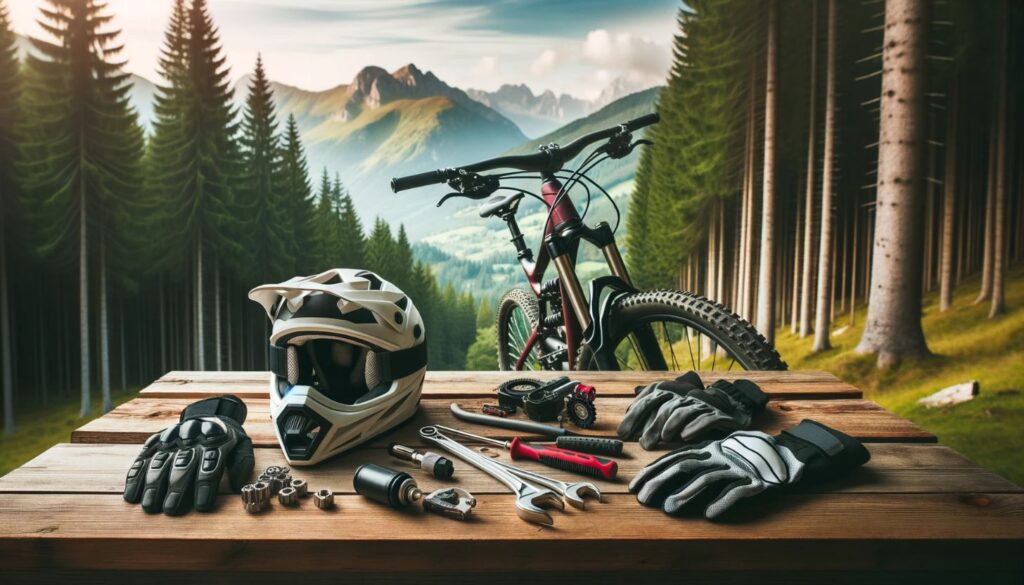
Mountain Biking Tips for Beginners
Mountain biking can be an exhilarating experience, but it’s important to prioritize safety to avoid any potential accidents or injuries. Here are some essential mountain biking tips for beginners:
- Always wear a helmet: A helmet is a must-have item for any mountain biker, regardless of skill level. Make sure your helmet fits well and is properly fastened before you hit the trails.
- Stay aware of your surroundings: Be alert and aware of other riders, obstacles, and any potential hazards on the trail.
- Start slow and gradually increase your speed: As a beginner, it’s important to start at a comfortable pace and gradually work your way up to more challenging trails and speeds.
- Keep your bike in good condition: Regularly inspect and maintain your bike to ensure it’s in good working condition before each ride.
- Learn and practice proper braking techniques: Knowing how to properly brake will help you maintain control and avoid accidents on the trail.
- Don’t push past your limits: Don’t feel pressured to attempt a trail or a technique that you’re not comfortable with. It’s okay to take a step back and train on easier trails before attempting more advanced ones.
By following these mountain biking tips for beginners, you can ensure a safe and enjoyable riding experience. Remember to always prioritize safety and have fun exploring the trails!
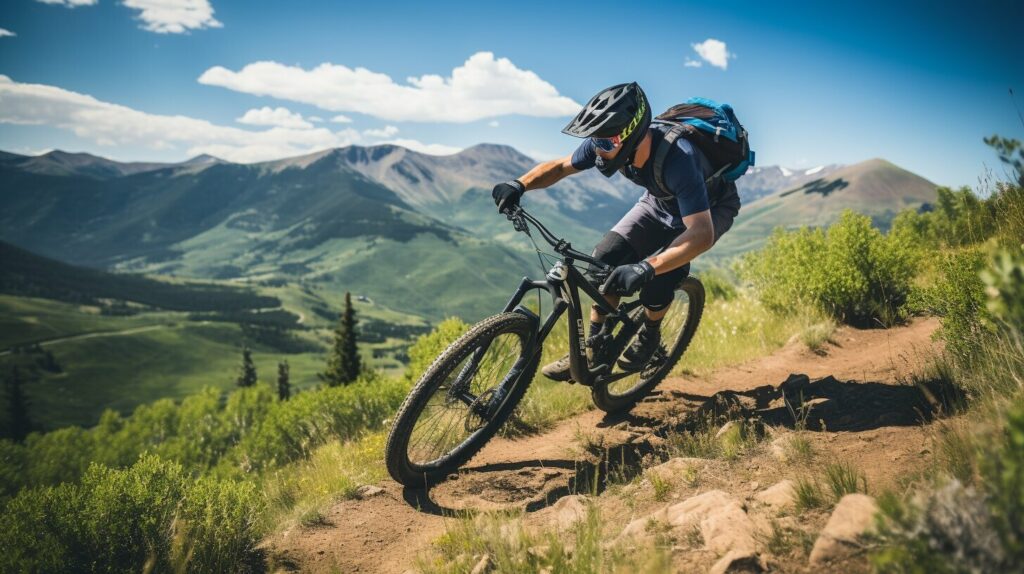
Enhancing Efficiency on the Trail
Now that you have a good grasp of the basics, it’s time to focus on improving your mountain biking techniques. The following tips will help you ride more confidently and tackle more challenging terrain:
- Braking: Use your brakes wisely. The front brake provides most of your stopping power, so use it in conjunction with the rear brake to slow down gradually. Avoid squeezing the brakes too hard, which can cause you to lose control or even go over the handlebars.
- Shifting gears: Learn how to shift gears efficiently. Shift to a lower gear for uphill climbs and a higher gear for downhill descents. Avoid shifting gears while pedaling hard, which can cause damage to your chain and gears.
- Handling obstacles: When approaching an obstacle such as a rock or tree root, lift your front wheel slightly by pulling up on the handlebars. This will help you roll over the obstacle smoothly. For larger obstacles, you may need to extend your arms and legs to absorb the impact.
Remember to always keep your eyes on the trail ahead, and anticipate any obstacles or changes in terrain. The more you practice these techniques, the more confident and competent you will become on your mountain bike.
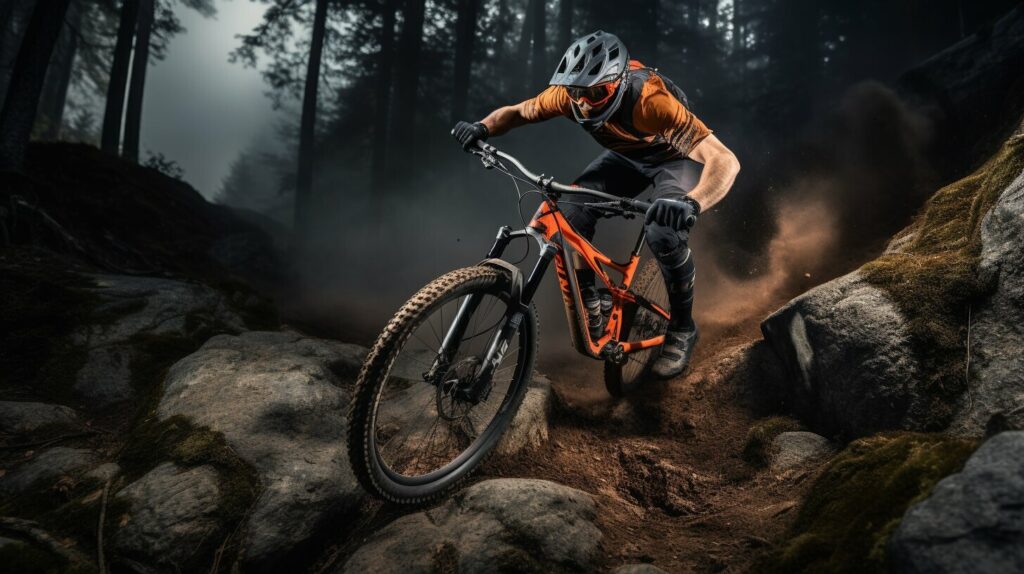
Avoiding Common Mistakes
As a beginner mountain biker, it’s easy to make mistakes that can hinder your progress and even put you in danger. Here are some of the most common mistakes to avoid:
| Mistake | Consequence | How to Avoid |
|---|---|---|
| Using the wrong gear | Increased difficulty, energy consumption, and risk of injury | Learn how to shift gears properly by using a gear chart and practicing on a flat surface. Use an easier gear when climbing and a harder gear when going downhill. |
| Not looking ahead | Increased risk of accidents and missing important trail features | Always look ahead on the trail to anticipate changes in terrain and obstacles. Keep your eyes up, not down on the bike. |
| Braking too hard | Inability to control the bike and increased risk of falls | Use your brakes evenly and gradually. Practice applying pressure to the brakes to get a feel for how hard you need to brake in different situations. |
| Overestimating your ability | Increased risk of injury and difficulty completing trails | Start with easier trails and gradually progress to more difficult ones as you gain experience. Be honest with yourself about your skill level and don’t attempt trails beyond your ability. |
By avoiding these common mistakes, you’ll be able to enjoy your mountain biking experience to the fullest. Remember to always prioritize your safety and ride within your abilities.
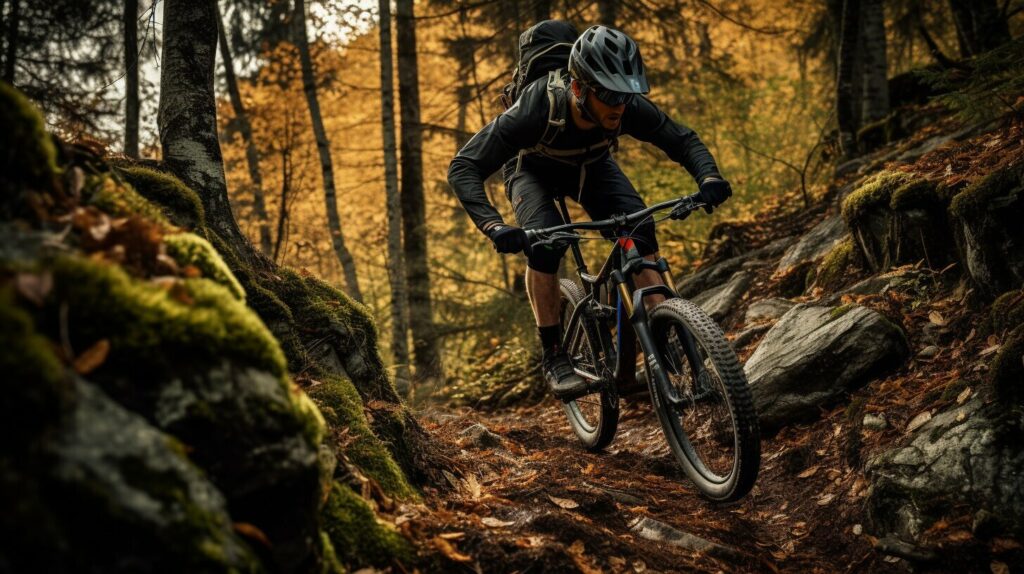
Beginner-Friendly Mountain Bike Trails
Ready to hit the trails? Here are some great beginner-friendly mountain bike trails to get you started:
| Name | Location | Difficulty |
|---|---|---|
| Brown County State Park | Nashville, IN | Easy |
| Porcupine Rim | Moab, UT | Intermediate |
| The Cannell Trail | Kernville, CA | Difficult |
Remember, always check the trail difficulty level and make sure it’s appropriate for your skill level. You don’t want to end up on a trail that’s too challenging and end up getting hurt or discouraged.
If you’re not sure where to find beginner-friendly trails in your area, check out your local bike shop or online forums. You can also download trail maps and read reviews on sites like MTB Project and TrailForks.
Don’t forget to bring plenty of water, snacks, and sunscreen. And as always, wear your essential mountain biking gear for maximum safety and comfort.
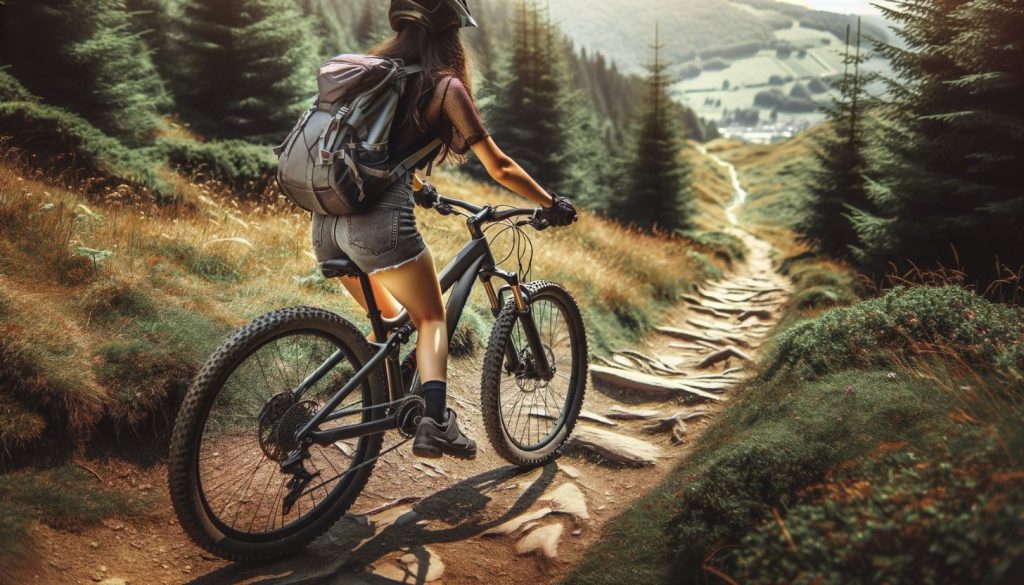
Get ready to experience the thrill of mountain biking on these beginner-friendly trails. With the right gear and techniques, you’ll be riding with confidence and having a blast in no time!
Conclusion
Whether you’re new to mountain biking or looking to enhance your skills, this guide has provided you with a solid foundation. By understanding the basics of mountain biking, choosing the appropriate gear, and practicing essential techniques, you can ride with confidence and minimize the risk of injury.
Remember to prioritize safety at all times by wearing proper protective gear and adhering to trail rules and regulations. Don’t forget to have fun exploring the world of mountain biking and trying out beginner-friendly trails in your area.
Thank you for reading this guide on mountain biking for beginners. We hope that it has equipped you with the knowledge and skills you need to get started with this exciting sport. Happy riding!
FAQ
What are some essential techniques for beginner mountain bikers?
Some essential techniques for beginner mountain bikers include proper body position, using your brakes effectively, and learning how to shift gears smoothly.
What gear do I need as a beginner mountain biker?
As a beginner mountain biker, you will need a helmet, gloves, comfortable clothing, sturdy shoes, and a water bottle. It is also recommended to have a multitool, spare tubes, and a pump for any potential repairs on the trail.
How do I choose the right mountain bike as a beginner?
When choosing a mountain bike as a beginner, consider factors such as your budget, intended riding style, and terrain. It is important to test ride different bikes and consult with knowledgeable staff at bike shops to find the best fit for you.
What are some safety tips for beginner mountain bikers?
Some safety tips for beginner mountain bikers include always wearing a helmet, carrying a first aid kit, riding within your limits, being aware of trail conditions, and letting others know your planned route.
How can I avoid common mistakes as a beginner mountain biker?
To avoid common mistakes as a beginner mountain biker, it is important to start slow, practice proper technique, listen to experienced riders, and always maintain your bike’s components.
Are there any beginner-friendly mountain bike trails?
Yes, there are many beginner-friendly mountain bike trails available. Some recommendations include [insert specific trail recommendations here]. These trails offer manageable terrain and a safe environment for beginners to practice their skills.

